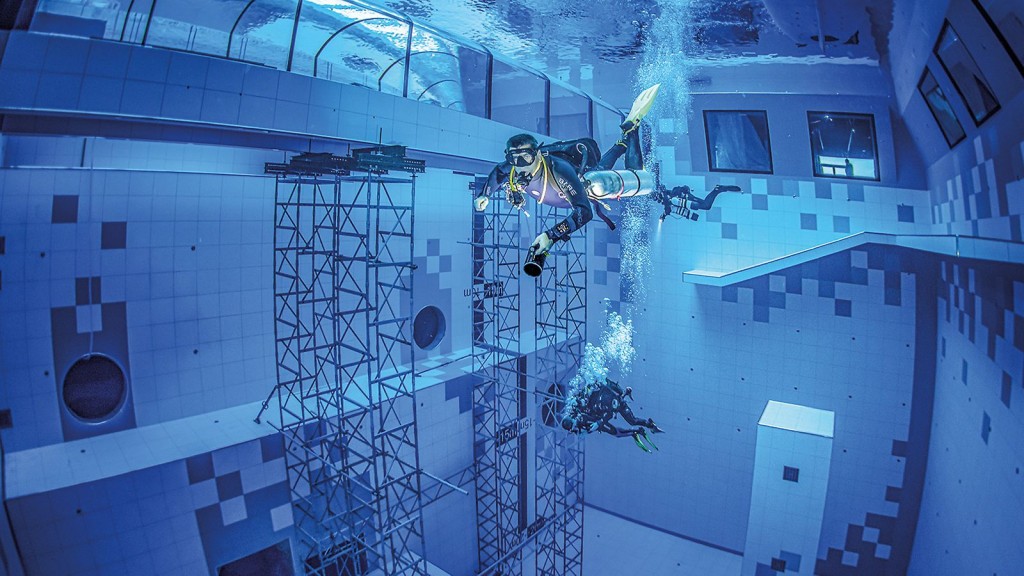
The Polish city of Mszczonów has become home to what is currently the deepest diving pool in the world. Numerous PERI systems were used for the construction of the pool, which has a depth of up to 45.50 metres.
One highlight was the dismantling of the ST 100 stacking towers which were used to meet static requirements. The stacking towers could only be dismantled after the pool had been filled with water - not by the company's own construction site staff, but by specially trained divers.
From a static point of view, the difficulty of building this submersible system is comparable to building an underground system. The static system of the pool is composed of a reinforced concrete floor slab, load-bearing walls with reinforced concrete piers and monolithic slabs. A variety of geometrically and technologically complex PERI Formwork solutions were used which were delivered pre-assembled to the construction site. The sloping walls of the diving pool were constructed with pre-assembled elements of TRIO Panel Formwork, while pre-assembled VARIO GT 24 girder wall formwork was used for the circular diving tube.
The deep diving tube with an internal diameter of 7.00 m and a foundation depth of 40.50 m below ground level posed the greatest design challenge. The concreting of the pipe rings with an outer diameter of 8.50 metres was carried out using monolithic construction in steps of 4.00 metres each. The 25-metre-deep shaft is divided into 4-metre-long segments. A hydraulic cylinder supported on VST heavy-duty towers assisted this process.
"The vertical alignment of the tube of the first stage shaft was the key to success here, which involved the use of special guides. The individual segments weighed 300 tonnes each. A total of 5,000 cubic metres of concrete was used," explained PERI design engineer Krzysztof Tyborowski. "Non-axial and irregular settlement along with the collision with jet grouting elements were a great challenge for the structural designer of the construction. A hydraulic unit was implemented to master this challenge by securing the precision of lowering of the first stage."
During the planning phase, PERI engineers paid attention not only to the static feasibility but also to the safety of the site personnel. The use of pre-assembled PERI systems, as well as the selected concreting procedure, ensured that work was carried out safely at all times - even in the great depths of the diving tube.
In addition to the diving tube, the underwater viewing bridge is also one of the highlights of the Deepspot diving system. The bridge only becomes self-supporting when the pool is filled with water and the necessary buoyancy force is fully present. For this reason, it was necessary to support it with shoring until shortly before the pool was commissioned.
It was decided that ST 100 stacking towers would be used to ensure safe load transfer. The dismantling of the stacking towers could only take place after the pool was filled with water. Professional divers were hired for this task, and in a total of ten hours they dismantled the scaffolding material, which weighed a total of 3,400 kg, under water and brought it safely to the surface.



